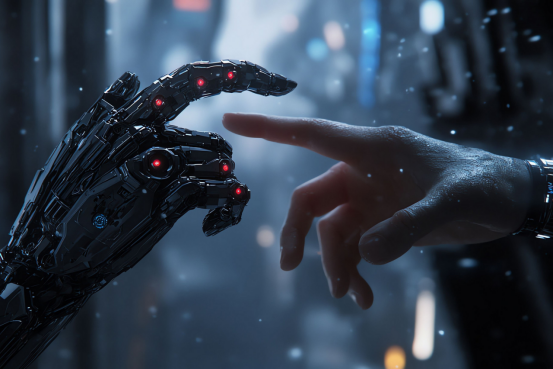As the population ages, China's elderly population aged 60 and above has exceeded 310 million, and the number of disabled and demented elderly people is expected to reach 100 million by 2030. When the traditional elderly care model faces challenges such as labor shortage and insufficient service refinement, elderly care robots are moving from science fiction scenes to reality, becoming an emerging force to solve the "silver hair dilemma".

Image Source:699pic.com
Policy spring breeze breeds industry hotspot
In June 2025, the Ministry of Industry and Information Technology and the Ministry of Civil Affairs jointly issued the "Notice on Pairing and Piloting of Intelligent Elderly Care Service Robots and Scenario Applications", which clearly proposed to deploy more than 200 sets of elderly care robots in the three major scenarios of families, communities, and institutions, and start a three-year large-scale verification. This policy signal and the "14th Five-Year Plan for the Development of the Robot Industry" form a synergy to promote the elderly care robot industry into an explosive period. At the local level, Shanghai, Xi'an, Chengdu and other places have introduced supporting measures, from financial subsidies to scene opening, to build a multi-dimensional policy support system.
Technological breakthroughs reshape the elderly care scene
In a nursing home in Shenzhen, a wearable exoskeleton robot is helping hemiplegic elderly people stand up again. Its flexible drive technology can achieve force feedback adjustment 200 times per second; the fifth-generation "Big Head Aliang" elderly care robot developed by Jiangsu Ai Yu Wencheng Company, with the upgraded Rockchip chip, can achieve real-time health monitoring within a range of 5,000 square meters. A single device can replace the daily workload of three caregivers. These breakthroughs are due to the maturity of embodied intelligent technology-through the deep integration of environmental perception, motion control and cognitive decision-making, robots can complete complex tasks such as fall warning, medication reminders, and emotional interaction.
Market blue ocean accelerates product iteration
According to the data of the Prospective Industry Research Institute, the scale of China's elderly care robot market will reach 7.9 billion yuan in 2024, and it is expected to expand to 15.9 billion yuan in 2029 at an average annual growth rate of 15%. The capital market's response is more acute: the net inflow of funds in the robot ETF exceeded 1 billion yuan this year, and the constituent stocks of the CSI Robot Index cover the entire industry chain of humanoid robots, industrial robots, and service robots. On the enterprise side, Huawei and Zhiyuan Robotics cooperated to develop a large model of health care scenarios, and UBTECH launched a companion robot with emotion recognition capabilities. The upstream and downstream of the industry chain are forming a collaborative innovation ecosystem.
Future vision: Symbiosis of technology and humanities
Driven by policy guidance, technological innovation, and capital support, elderly care robots are breaking through the "tool attribute" and evolving into "emotional partners". Behind the "10,000 units annual production capacity" planned by Guanggu Dongzhi Company is the in-depth development of market segments such as chronic disease management and dementia intervention. When technologies such as 5G and brain-computer interfaces are further integrated, the future elderly care scene may present: exoskeleton robots assist the elderly in completing Tai Chi movements, embodied intelligent bodies comfort Alzheimer's patients through multimodal interactions, and all data form an unalterable health record on the blockchain.
The ultimate value of elderly care robots is not to replace human caregivers, but to build a triangular support system of "technology-service-humanity". As Ran Chenglong, the developer of "Big Head Aliang", said: "Real intelligence is not the piling up of codes, but allowing technology to sense the changes in body temperature when the elderly get up at night, and tell a heartwarming old story in the lonely moments." On this challenging track, China's elderly care robot industry is adding an average of 3 patents per day, writing the technological warmth that belongs to an aging society.
- pre:Diverse Trends and Pathways Driven by Manufacturing Sectors
- next:Supply of Chinese Metal Machinery in Multiple Industries and Future Trends
Please click to consult us immediately or call the hotline: 4006-979-616We will solve the problems in your heart in detail。Online consultation



 Online Service
Online Service
